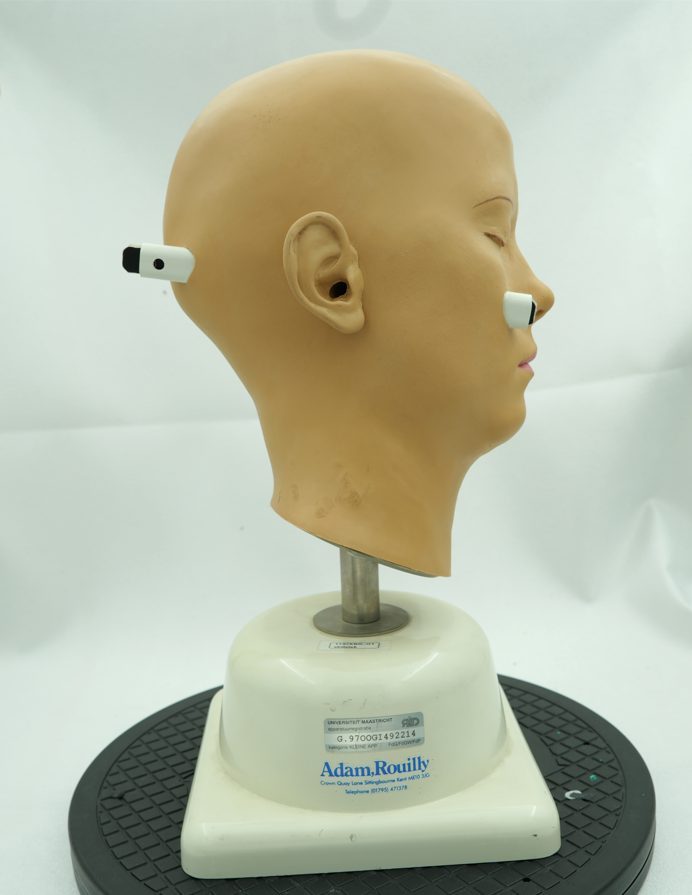
The otoscopy training head used at Maastricht University is more than just a teaching tool; it represents a broader commitment to hands-on clinical education that has been central to the university’s medical program since its inception. For this training head, students use an otoscope to examine the ear canal. A white stick inside holds a slide showing an ear condition, which they can rotate from the outside to view different clinical scenarios. This setup lets them practice identifying symptoms and become familiar with ear examinations before working with real patients.

Image of the Real-Life Training Head
As one of the first European institutions to introduce a dedicated Skillslab, Maastricht University embedded practical training into its curriculum from the start (Bugaj & Nikendei, 2016). In this structured environment, students practice clinical procedures on simulation models alongside theoretical learning. The otoscopy training head is part of this approach, giving students a realistic tool to safely rehearse examination techniques before applying them in clinical settings.
This emphasis on learning by doing aligns closely with Maastricht’s use of problem-based learning. When the medical faculty was founded in the 1970s, real-life medical cases were placed at the center of student learning to help justify creating an eighth medical school in the Netherlands, despite opposition from existing universities (Servant-Miklos, 2019). Rather than focusing on lectures, PBL organizes students into small groups to work through clinical problems, encouraging self-directed study and collaboration. Within this system, training tools like the otoscopy dummy help students build practical skills and prepare for clinical work with greater confidence.